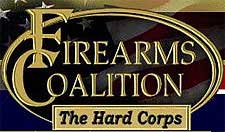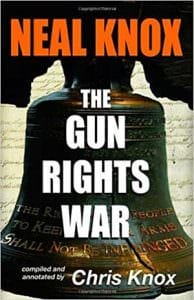By Jeff Knox : Opinion


Buckeye, AZ –-(Ammoland.com)- We’re seeing a new round of activity in the comment sections on articles about Mike Strickland’s felony prosecution and conviction for brandishing a gun during a PDX-Black Lives Matter event in Portland. You can read my original report on this here, and Mark Walters’ commentary on the subject here.
Much has changed since those reports, so it’s time for an update.
For those who didn’t, and won’t bother to, read the original story, here is a recap.
Mike Strickland was a video journalist specializing in catching “progressives” behaving badly, and posting those videos on his YouTube channel called “Laughing at Liberals.” He was well known among “liberal” activists and politicians in the Portland area, and roundly hated.
On July 7, 2016, the same day that a BLM supporter murdered 5 police officers in Dallas, Strickland was videoing a PDX-Black Lives Matter protest in downtown Portland. He was recognized by some of the protesters, and a group of them converged on him, pushing and threatening him. Organizers admitted during the trial that Strickland’s likely presence had been discussed before the event, and it had been decided that if they saw him there, they would make him leave or make him regret not doing so.
As the group closed on him, Strickland began backing away, asserting his right to be there and to record video, but the group got more aggressive and threatening, to the point that Strickland raised his shirt and placed his hand on his legally carried pistol. This created a pause in the assault, but it was only momentary. The crowd continued to close and Strickland continued to back away.
The men Strickland was facing had seen his sidearm. They knew he had the gun and had heard him warn that he would use it, yet they continued to press. One of the prime instigators, an overweight Antifa activist who Strickland had had run-ins with in the past, circled around and tried to close on Strickland’s left flank. At the same time, some in the main group began to aggressively surge forward. That’s when Strickland drew the gun, turning first toward the Antifa guy rapidly closing on his left flank, then back toward the main body of aggressors.
At no point did Strickland actually point the gun at anyone though, instead keeping it in a low-ready position, with his finger clearly indexed outside the trigger guard, he ordered the aggressors to “Back off.”
Strickland had backed up almost a full city block from the time he exposed his handgun to the time he actually pulled it. He then backed another block up and over to an area where police had gathered, and reported what had happened. The police ordered him face-down in the street and arrested him.
Strickland was initially charged with misdemeanor threatening and disorderly conduct, but those charges were quickly upped to multiple felonies after prosecutors realized who Strickland was.
He was eventually convicted on 10 felony counts of Unlawful Use of a Weapon, 10 counts of Menacing, and one count of Disorderly Conduct.
Though the potential penalty for Strickland’s conviction could have been more than 50 years in prison, the judge opted for a much lighter sentence.
Strickland was sentenced to 40 days in jail, 240 hours of community service, prohibited from videoing public events for at least the rest of the year, and, since 10 of the charges were felonies, he lost his right to possess firearms and ammunition for the rest of his life.
Many have suggested that Strickland was at fault because he could have run away, or shouldn’t have been there in the first place. Certainly he could have chosen to skip the protest, or leave as soon as someone suggested that he do so, but that’s not how things are supposed to work in this country. Covering these sorts of events was Strickland’s job. It’s how he made a living. He did try to avoid confrontation, and backed away, but the aggressors kept after him – while they ignored other reporters in the same area.
Had Strickland been a black reporter at a Nazi rally, would people be blaming him for drawing his gun?
The judge declared that Strickland was not in danger, and had a means of egress, but his adversaries were threatening and trying to box him in, even after he had first warned them, let them see the gun on his belt, and even after he had drawn it. These were not peaceful protesters. These were thugs demonstrating a willingness – even a desire – to do violence. This type of thuggery is why it’s becoming common for reporters to hire off duty police to escort them at events where Antifa or BLM are involved.
Strickland was in a no-win situation for just trying to do his job. He obviously didn’t want to hurt anyone, but neither did he want to be hurt himself. In a perfect world, police would have come to his assistance, but police weren’t in the immediate area because they feared the protesters.
The relatively light sentence meted out by the judge, shows that he knew Strickland wasn’t a threat to society. He also knew that the trial had been a sham, and the conviction was contrary to established precedents. The liberty community was beginning to boil over the case, and the judge knew that a harsh sentence would generate significant backlash. By going with a sentence that was much lighter than it could have been, the judge was hoping to throw a wet blanket on the public’s outrage over the case, and to make the idea of pushing an appeal less appealing.
He accomplished the first objective. Many reporters from the rights community lost interest in the case after the sentence was announced. That has resulted in less financial support for an appeal.
As to the second objective, Strickland is again in a very difficult situation. By the time an appeal can have any impact, he will probably have served out his sentence, and will only be working to clear his name and restore his rights. While those are worthy goals, the other side of the equation is that even if a new trial is ordered, exoneration is not guaranteed, and Strickland could end up with a much harsher sentence, even if he is only convicted on one or two of the charges, not to mention that it will cost tens of thousands of dollars to try, and even if he were to win everything else, financial restitution is not likely.
The prudent thing for him to do would be to just do his time and move on with his life. It’s easy for keyboard warriors to talk about the courage of one’s convictions, but it’s different when it’s your neck in the noose.
Even with the risks involved, Strickland has chosen to move forward with an appeal. He’s serving his jail time on weekends, and has, with the assistance of the Oregon Firearms Federation, assembled a legal team that has begun the process of collecting transcripts and gathering evidence. This will be a long and expensive battle.
You can help by donating to Strickland’s legal fund at the Oregon Firearms Federation. Go to the OFF website and make a contribution.
© 2017, The Firearms Coalition

About Jeff Knox:
Jeff Knox is Director of The Firearms Coalition, www.FirearmsCoalition.org, and a regular columnist at www.Ammoland.com, Firearms News magazine, and other publications.
Jeff Knox is a second-generation political activist and director of The Firearms Coalition. His father Neal Knox led many of the early gun rights battles for your right to keep and bear arms. Read Neal Knox – The Gun Rights War.
The Firearms Coalition is a loose-knit coalition of individual Second Amendment activists, clubs and civil rights organizations. Founded by Neal Knox in 1984, the organization provides support to grassroots activists in the form of education, analysis of current issues, and with a historical perspective of the gun rights movement. The Firearms Coalition has offices in Buckeye, Arizona and Manassas, VA. Visit: www.FirearmsCoalition.
